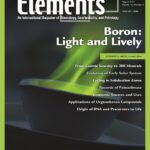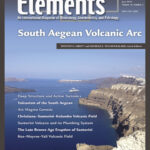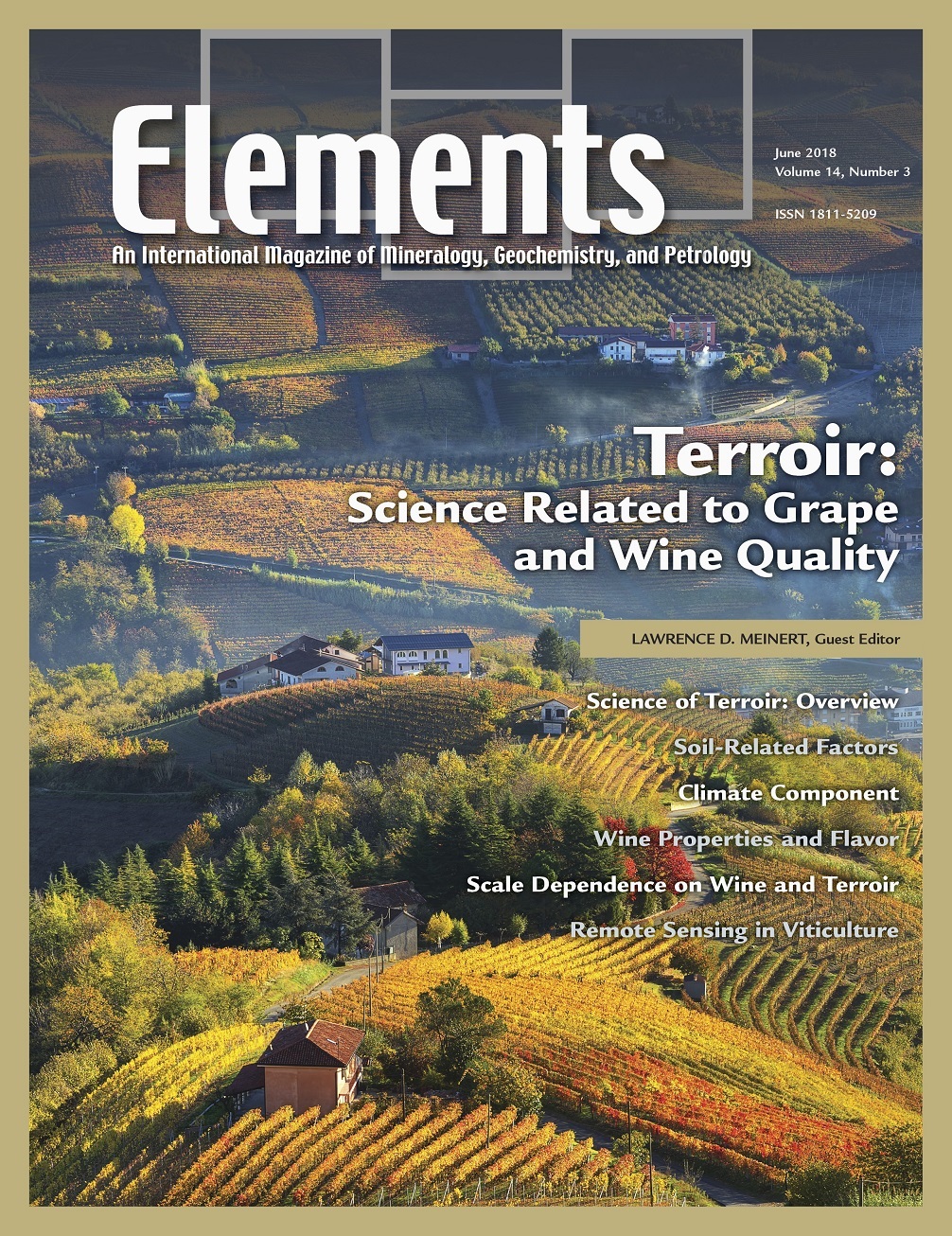
Boron: Light And Lively, August 2017, Vol. 13, No. 4
June 28, 2024
South Aegean Volcanic Arc, June 2019, Vol. 15, No. 3
June 28, 2024Terroir – Science Related To Grape And Wine Quality, June 2018, Vol. 14, No. 3
$20.00
This special issue explores the physical environment that shapes the character and quality of wine, ranging from geology and soils to viticulture and climate. It also discusses some of the technological advances such as drones, remote sensing, and precision agriculture, that are revolutionizing the production of fine wine.
Terroir – Science Related To Grape And Wine Quality
June 2018, Vol. 14, No. 3
This special issue explores the physical environment that shapes the character and quality of wine, ranging from geology and soils to viticulture and climate. It also discusses some of the technological advances such as drones, remote sensing, and precision agriculture, that are revolutionizing the production of fine wine. The French have a word for all aspects of the wine environment, terroir, and this special issue of Elements explains to a general audience the modern understanding of terroir. It is common, although usually incorrect, to point to a single factor as the explanation: “It’s the soil.” “It’s the water.” “It’s the limestone.” Terroir is the integration of all individual factors that contribute to wine quality, and this is appropriately summarized by the phrase “in vino veritas”.
Why You’ll Love Elements Magazine:
- Expert Contributors: Articles written by renowned researchers in the field of geoscience.
- Engaging Content: Join a community of readers who are passionate about Elements.
- Exceptional Quality: Each issue is printed on high-quality paper with stunning visuals and detailed illustrations that bring complex scientific concepts to life.
Order your copy of the June 2018 issue of Elements magazine today and explore terroir – science related to grape and wine quality.
Related products
-
Fluids in Planetary Systems, January 2005, Vol. 1, No. 1
$20.00Water and other geofluids play an important role in the geochemical and rheological evolution of the Earth and other bodies in the solar system. These fluids are responsible for the formation of hydrothermal mineral deposits, affect eruption behavior in volcanic systems and the geophysical properties of the mantle, and significantly affect the way in which rocks deform and fracture.
-
Zircon – Tiny But Timely, February 2007, Vol. 3, No. 1
$20.00Where would Earth science be without zircon? As Earth’s timekeeper, zircon has proven to be a remarkable and versatile mineral, providing insights into deep time and ancient Earth processes. However, there is still much to learn about Earth’s history from zircon and its behaviour.
-
Supervolcanoes, February 2008, Vol. 4, No. 1
$20.00Explosive super-eruptions from large volume, shallow magma systems lead to enormous and devastating pyroclastic flows, the formation of gigantic collapse calderas, and deposition of volcanic ash over continent-sized areas. Recognition that future eruptions from these “supervolcanoes” will undoubtedly have severe impacts on society—and perhaps on life itself—has led to recent public and media interest.




